The Mercedes-Benz R129 is part of the company’s official collection. As a 1/18 model car made by Norev, it manages to be as fascinating as the real roadster
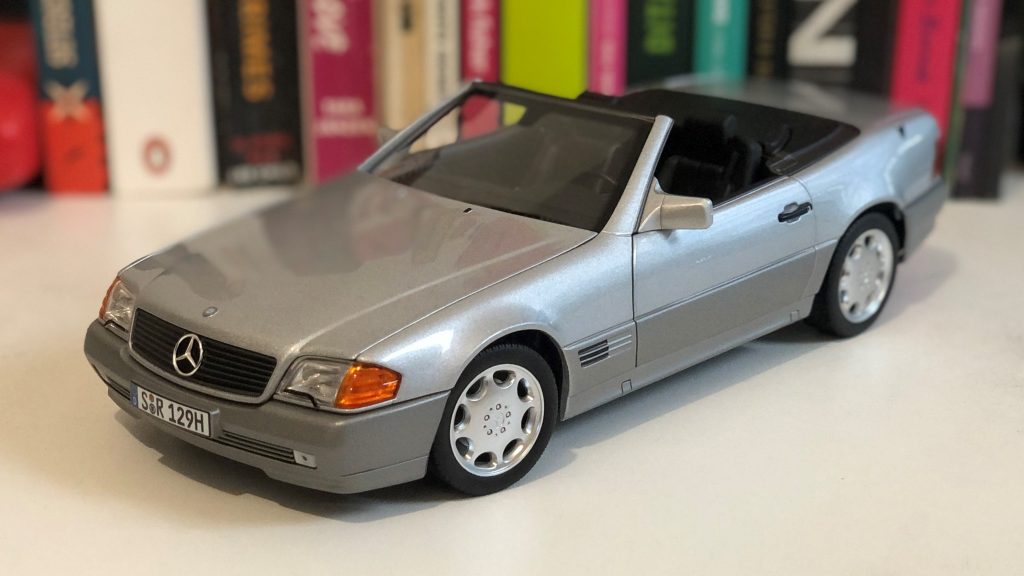
Growing up in the 1990s has defined many of my favorites when it comes to cars. I began to learn about them right when the car industry was embracing electronics for the first time. That action caused drastic changes inside, through performance and fuel efficiency, and outside, in terms of design development.
Mercteil is a Latvian store which specializes at genuine Mercedes-Benz parts. People there know about my car preferences and sent me a beautiful Christmas gift. The model car in the pictures is a 1989 Mercedes-Benz SL-Class. Since it is my absolute favorite Mercedes, I took the opportunity to write a little about it.
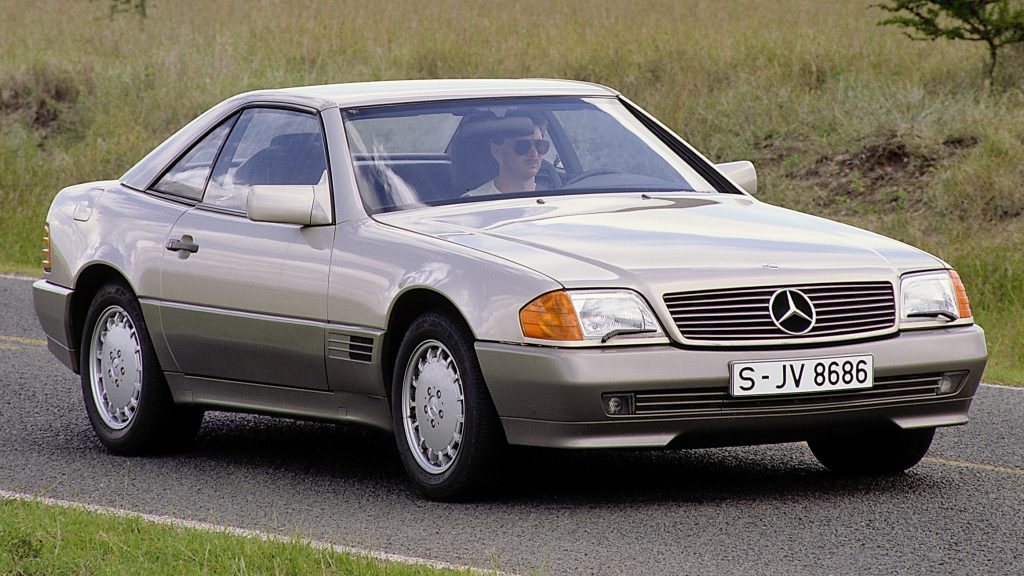
Mercedes-Benz R129
Let me start by introducing the actual car. The R129 code represents the Mercedes-Benz SL-Class offered from 1988 to 2001. It had the tough mission of replacing the R107, which spent 18 years in line with good sales. To that end, the R129 would come with all the possibilities that technology had to offer back then.

The roadster had electric action on many items, automated fabric roof, and a manually detachable hardtop. Two innovative features were an automatic roll-over bar that comes to place in case of need, and a permeable grille that stops draughts behind the seats. The range of engines went from a 2.8L I6 to the SL 73 AMG‘s 7.3L V12.
The Mercedes-Benz R129 became popular for embodying the spirit of the 1990s. The boxy design signed by Bruno Sacco gave it a sense of familiarity in the lineup. The technological advancements, in turn, made it so competitive that it would receive minor updates over the years, until making room for the R230.
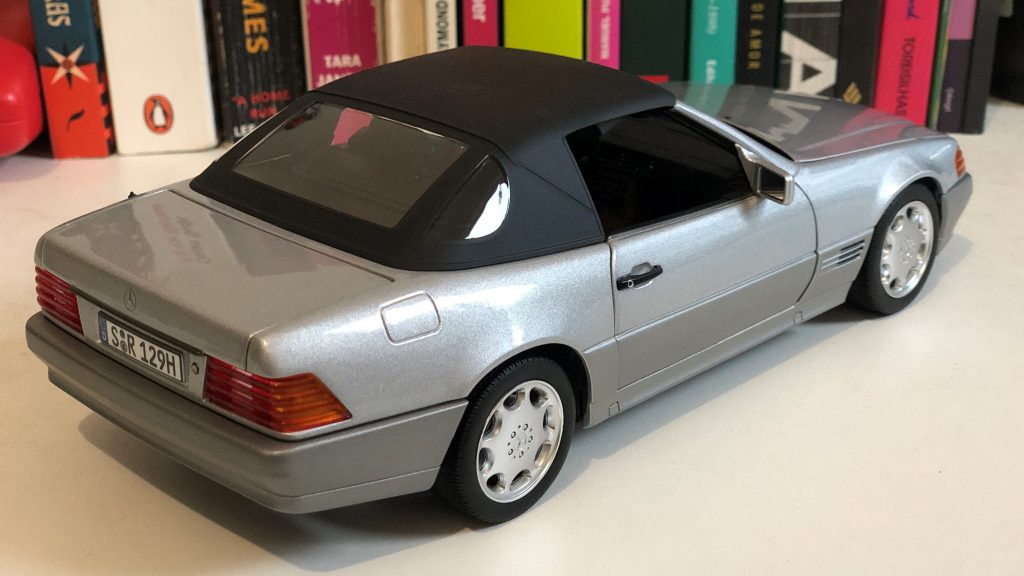
The SL-Class model car
Mercedes-Benz has a Collection of genuine products which goes from keyrings with Swarovski crystals to a wooden sled. Some of them are die-cast model cars, like the R129 which illustrates this article. They are all produced by Norev with hand assembly, and feature build quality which is impressive to say the least.
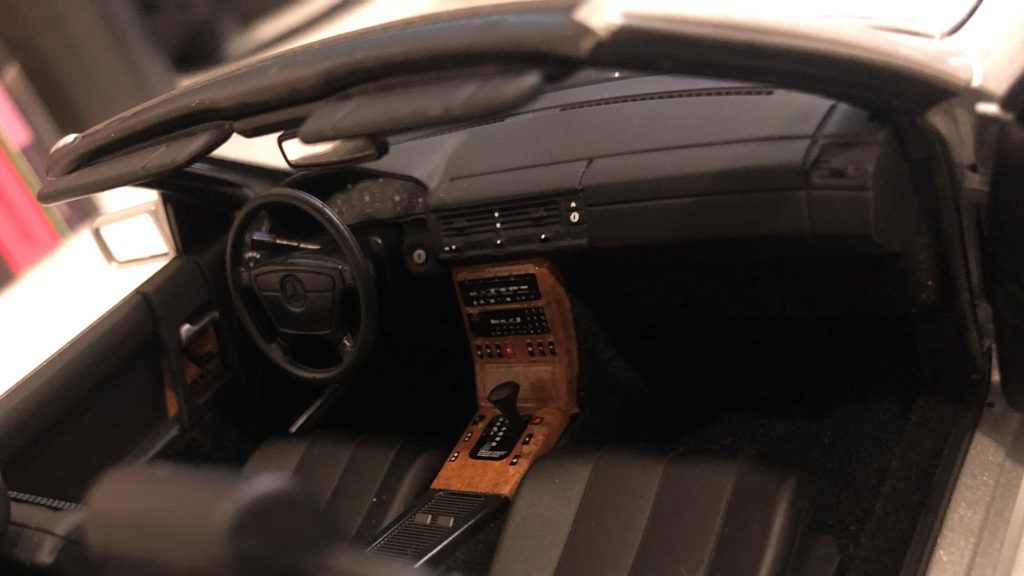
At first, the SL-Class model car catches the eye because of its traditional features. The famous eight-spoke wheels, the roadster stance with long hood and short rear, the seats installed just in front of the rear axle, and the ribbed taillights. It is a perfect blend of its own image with the Mercedes-Benz of that time.
Then again, traditional features like those are the starting point in model cars. What makes the good ones stand out is the attention to the specific ones. If you want a taste of those, this model car brings both the fabric roof and the hardtop as detachable parts. But there is much more for us to observe in that regard.
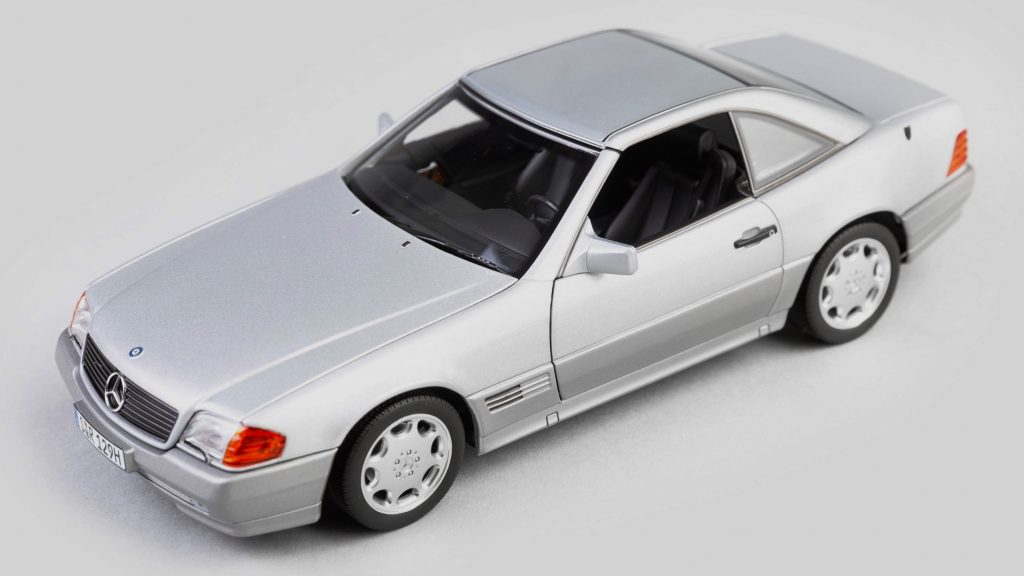
Quality lies in the details
Each wheel represents five bolts in their openings. That silver paint shows a metallic texture under direct light. The lower part also replicates the matte version of that hue. The antenna in the rear quarter is also there, which is great because it implies extra manufacturing steps for an item often considered irrelevant.
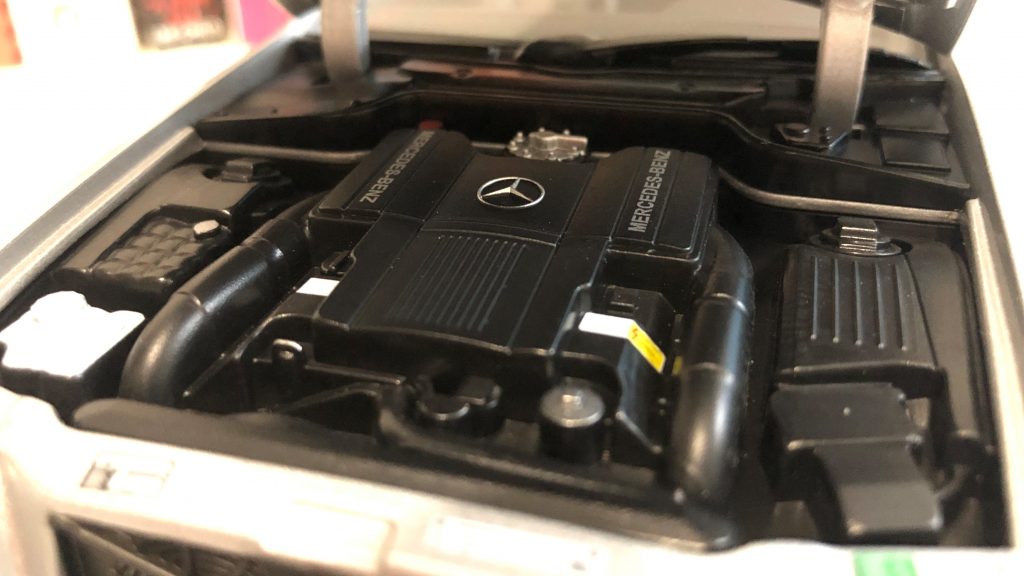
The fabric top shows the creases from its internal structure. It is a nice touch, although it is a rigid piece; I have seen older model cars which actually reproduce its folding mechanism. In that regard, the hardtop is more convincing: even though it is made of plastic, it reproduces the body paint with no differences.
To finish commenting on external parts, hood, trunk lid, and doors open and close with a solid feel. This is important because we have to open them to properly observe the interior. In model cars, they often lock hard enough to make opening difficult, and/or close with a metallic noise. This is a refreshing exception.
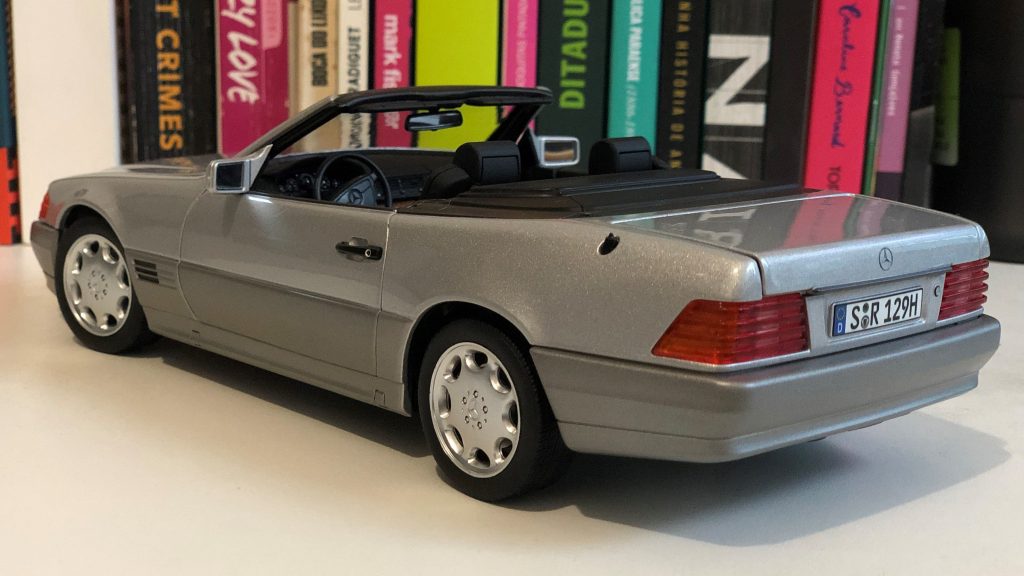
Even more interesting inside
One of the items that surprised me the most was the seatbelts. While many model cars depict the strap as an elevation on the seat, it is independent in this Mercedes-Benz SL-Class and made of a flexible material with a realistic texture. We can even see the male retractors with a realistic shape and a reflexive paint.
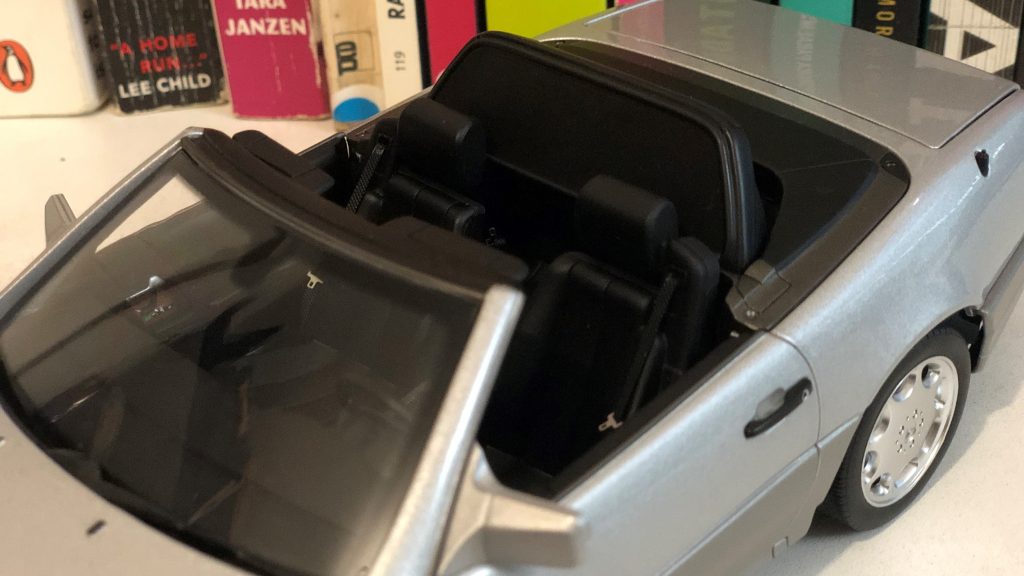
The dashboard employs stickers as the gauges and labels on the center console, which is fine considering their size. However, it is great to see how high their resolution is: we can see the PRND next to the lever. Another item I always like to see is the steering wheel spin a little when you turn the front wheels yourself.
Cabin and engine are usually reproduced well in model cars of this scale. Other beautiful touches are that draught stop, which can be manually lifted, and the use of felt on the door panels and the trunk. Speaking of the latter, you can also observe the emergency triangle (not detachable) on the internal side of the lid.

Mercedes-Benz 1/18 model car
Model cars like this Mercedes-Benz R129 are not cheap, of course. They are the type of product that only diehard enthusiasts enjoy. However, it is pleasant for everyone to observe them because we all appreciate excellence. The longer we admire model cars like that, the more forms of such excellence we will notice.
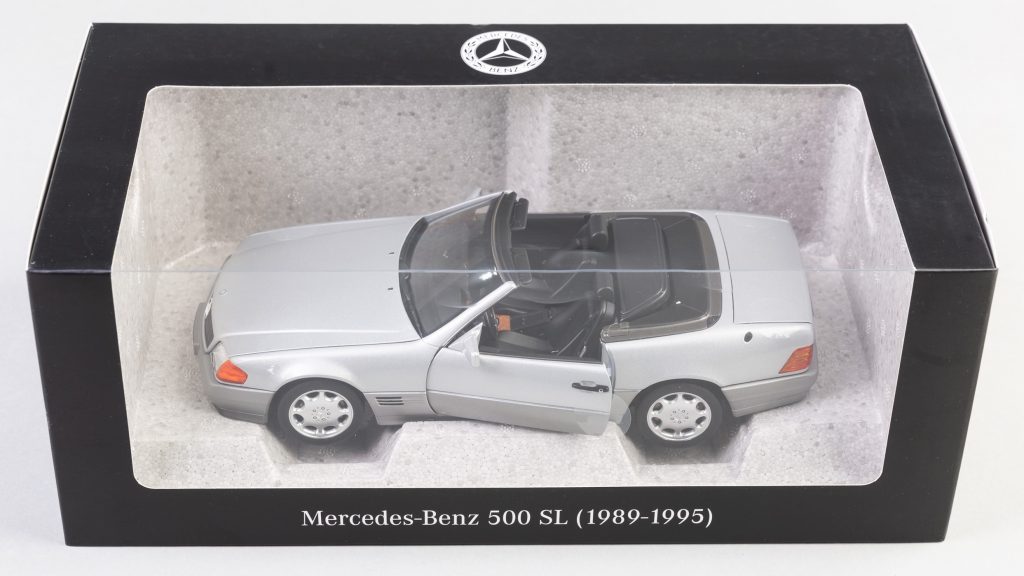
The Mercedes-Benz SL-Class I have was provided by Mercteil, which sells genuine Mercedes-Benz parts of all kinds. It sells many other model cars from the company’s Collection, such as the EQA, the C-Class and other generations of the Mercedes-Benz SL-Class. Not to mention countless parts for actual car models.
I hope that this article effectively conveys what model cars truly represent. There are miniature toys, which children can throw, drop, and/or crash as part of playing. True model cars are made to be appreciated and admired not only for the cars they represent, but also for their own excellence as accurate reproductions.
Danillo Almeida has explored his passion for cars in two distinct ways. The first one is his graduation course in Mechanical Engineering, which will hopefully lead to a job position in the field. The other one is expressing his knowledge and opinions on the matter through writing. Almeida has already contributed to blogs, stores, and websites in general writing automotive content in many formats.



